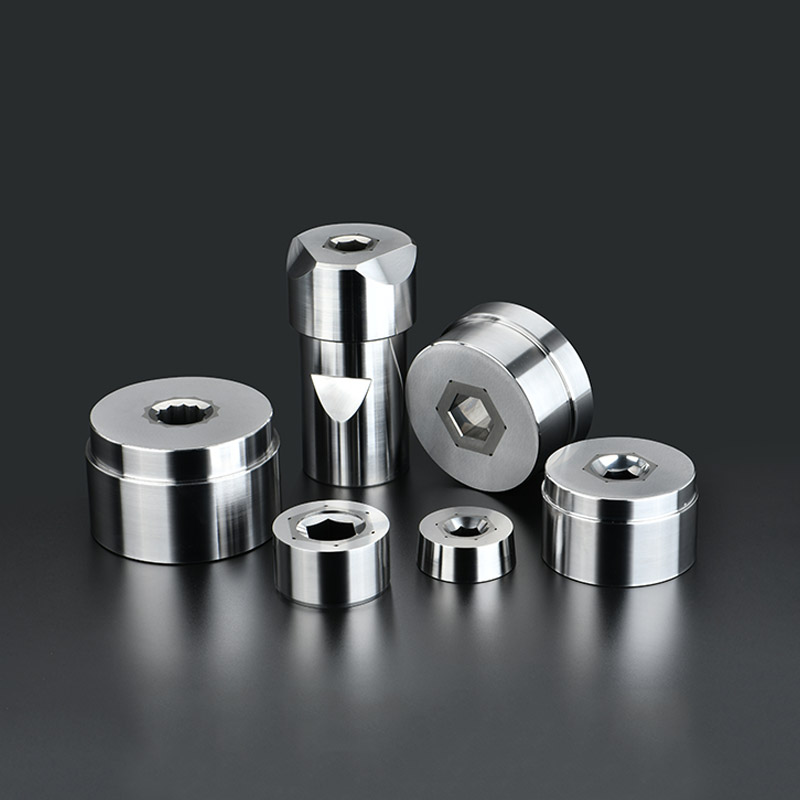In today’s fast-paced manufacturing environment, non-standard fasteners are increasingly used across sectors such as automotive, aerospace, electronics, and construction. These fasteners often feature complex geometries, specialty threads, or custom head shapes that cannot be produced using standard Cold Heading Molds. To meet this demand, custom Cold Heading mold design has become a key competitive differentiator for manufacturers seeking precision, durability, and efficiency.

Why Custom Cold Heading Molds Matter
Unlike standard bolts or screws, non-standard fasteners require specialized forming processes. A generic mold may lead to poor dimensional accuracy, excessive material waste, or even product failure under stress. Custom molds, on the other hand, are engineered to fit the exact shape, material, and forming characteristics of each part.
Key benefits of custom-designed molds include:
Higher dimensional accuracy
Improved product consistency
Reduced secondary machining
Longer tool life due to optimized geometry
Fewer defects and lower rejection rates
Key Considerations in Custom Cold Heading Mold Design
1.Understanding the Fastener Geometry
The first step in custom mold design is a complete analysis of the fastener's geometry. Whether it's a complex undercut, asymmetrical head, knurled shank, or hybrid thread, the mold must replicate the shape with precision and repeatability.
2.Material Compatibility
The material of the fastener—be it stainless steel, alloy steel, brass, or titanium—affects mold material selection. For harder metals, high-performance die steels or carbide inserts are typically used to resist wear and deformation during high-pressure forging.
3.Multi-Stage Forming Requirements
Many non-standard fasteners require progressive or multi-die operations, including pre-forming, necking, and final shaping. Each stage must be carefully designed and aligned to avoid misfeeds or dimensional errors.
4.Tolerance and Surface Finish Expectations
Precision is everything when producing components for industries such as aerospace or medical devices. A well-designed mold ensures consistent tolerances of ±0.01 mm or better and supports smoother finishes to reduce post-processing.
5.Simulation & Prototyping
Leading mold designers now use finite element analysis (FEA) and CAD simulations to test mold behavior before production. This minimizes costly iterations and ensures the mold performs as intended from the start.
6.Ease of Maintenance and Replacement
Custom mold systems are increasingly modular—allowing fast replacement of inserts and wear components. This reduces downtime during maintenance and extends the mold’s overall service life.
Examples of Non-Standard Fastener Applications
Custom head bolts for automotive engines
Miniature electronic fasteners with knurled profiles
Anti-theft bolts with tamper-resistant heads
Dual-thread studs for specialty machinery
Step bolts used in high-voltage towers and structures
Delivering Value with Custom Mold Solutions
By partnering with a mold manufacturer who specializes in custom Cold Heading Dies, businesses can expect:
Tailored engineering support from drawing to production
High-efficiency mold designs that reduce cycle times
Strict quality control to meet industry-specific standards (ISO, DIN, ANSI)
Fast prototyping and delivery times to accelerate product development
Final Thoughts
Investing in custom cold heading molds for non-standard fasteners is not just about forming metal—it’s about achieving engineering precision, maximizing efficiency, and ensuring product integrity. Whether you need a unique fastener shape or must meet strict tolerance and performance criteria, a customized mold solution is the key to unlocking consistent quality and competitive edge.











